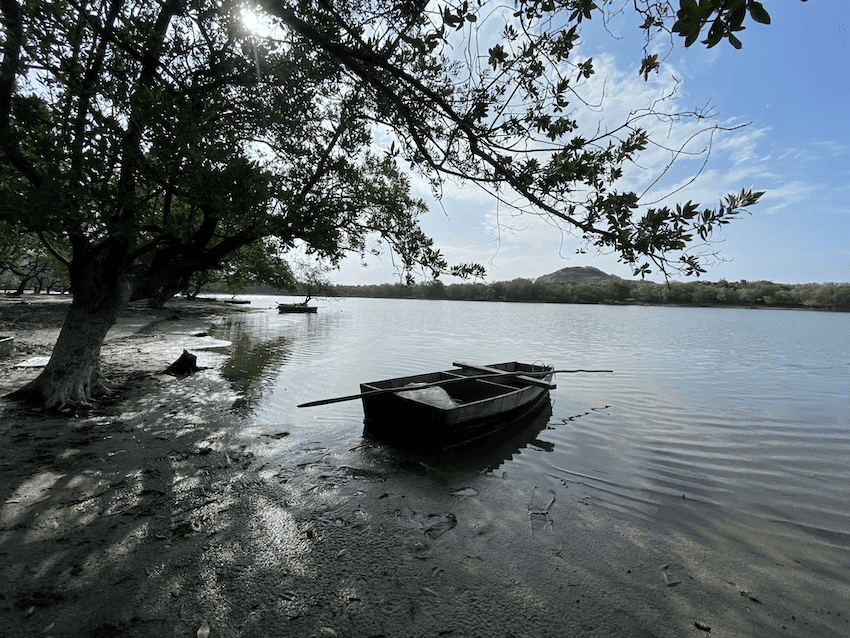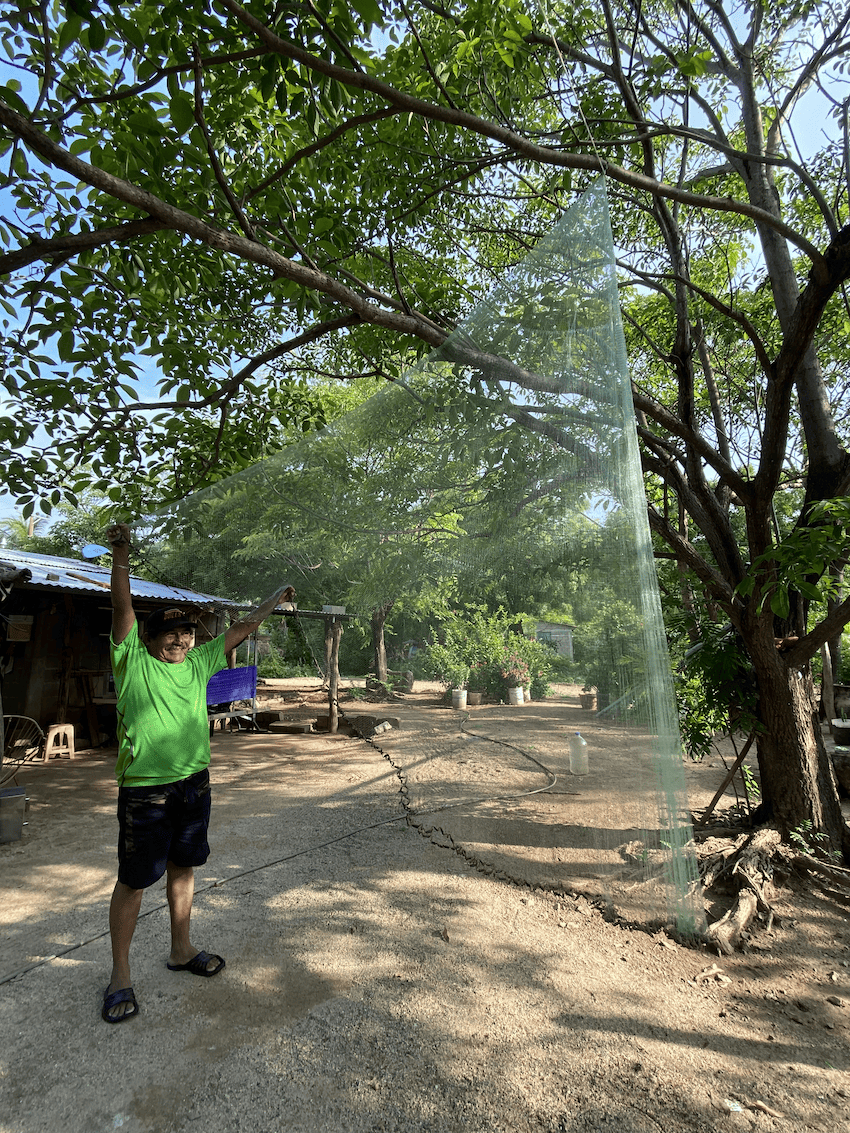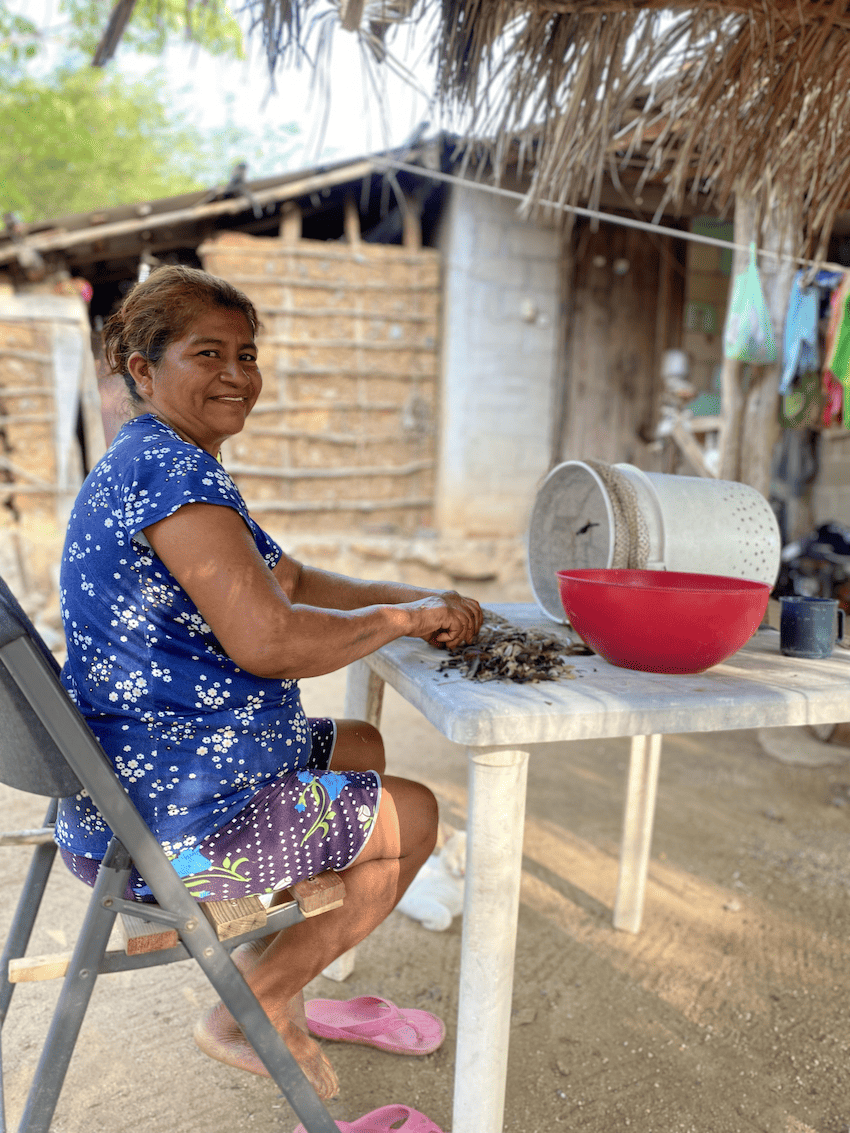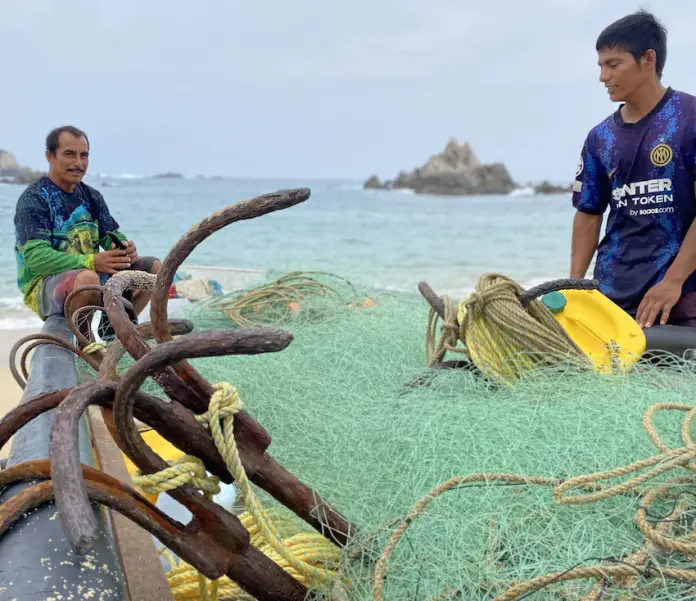The “Framing Mexico” photo essay series for Mexico News Daily will capture the fascinating journeys, processes and personalities behind some of the most beloved elements of life in Mexico.
Towering palm trees brush against the salty night wind blowing inland from the Pacific in the secluded fishing village of Concepción Bamba, Oaxaca, which locals refer to as La Bamba.

Flashes of light from firefly colonies shimmer around Sergio Vásquez Lara as he quietly unpegs two fishing nets from a clothesline suspended between two palms. It’s a little before 4 a.m., and the clear July sky shrouds his path to the sprawling lagoon in darkness.
Sergio has walked the same invisible path thousands of times since he was a young boy with his father, who taught him everything he knows about the lagoon. It has been the lifeblood of the town for generations.
Sergio’s father is famous in La Bamba. As a young man, he was one of only a handful of free divers who would venture into the lagoon and wild waters of the unpredictable Pacific to fish for oysters. His keen eyes, iron lungs and powerful strength also helped him catch species that roam in deeper waters, like sea bass, milkfish and blue crab.
“He’d take nothing more than his fins, his visor, thick gloves and his powerful lungs to free dive to depths of four or five meters,” Sergio tells us proudly.

In less than two months from now, shoals of exotic fish will migrate from the ocean to shallower waters in the lagoon. Today, however, it’s high season for shrimp. Sergio has returned with 11 pounds in under two hours. He takes a moment to catch his breath as his mother Juliana prepares to take center stage.
One by one, she carefully cleans the shrimps, which seem to shine in the dawn light.
Some mornings, her sons will catch up to 110 pounds of shrimps from the lagoon. With such a large quantity, the whole family will sit down together to clean them under Juliana’s guidance and watchful eye.
“Fishing is a vital part of our local economy here,” Juliana says. “As a family and as a community, we rely on the lagoon for fish and on our neighbors to help sell what the water gives to us.”

Erlinda lives across the dirt road from the Vásquez Lara home. She’s cooked several kilos of shrimp and readied them for transport by 7 a.m. Depending on the catch, Erlinda will travel to sell to markets and restaurants in Salina Cruz or further inland. From time to time, she’ll barter with sellers in other villages to trade the prawns for coconuts, mangos or freshly baked bread.
A sense of pride, unspoken trust and appreciation of community all underpin this remote coastal fishing. Larger operations and motorized fishing cooperatives exist across Mexico’s nearly 5,800 mile coastline, yet many still favor traditional fishing techniques passed down over generations.
Water pollution and warmer waters pose a risk to the livelihoods of fishing communities, and the supply chain which sees some of the world’s freshest and most diverse seafood made available in cities and towns throughout Mexico.

Today, the tale of the fishermen and their families is progressing well, even if the long-term futures of small fishing communities like Concepción Bamba, which rely on unpolluted oceans, stable water temperatures and thriving marine ecosystems, have yet to be written.
Mirja Vogel is a Oaxaca-based international photographer. Gordon Cole-Schmidt is a freelance journalist and editor.
